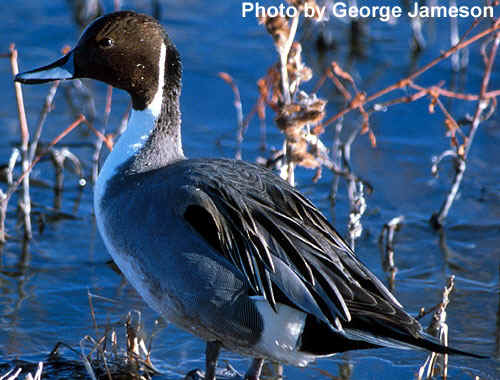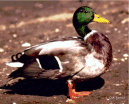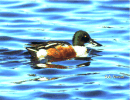Photos: (left to right from top) Northern pintail, Gadwall, Mallard, American widgeon, Northern shoveler, Cinnamon teal, Green-winged teal, Blue-winged teal.
(Currently studied by CWE researcher Brent Gurd)
Click here for a list of publications by CWE researchers working at Riske Creek.The group of waterfowl know as the dabbling ducks includes 10 species thatcommonly occur in Canada. Of these, 9 species breed and/or winter in BC. Currently, the CWE is involved in research on the population and foraging dynamics of eight species that breed in the wetlands of the Fraser Plateau in the BC interior. These eight species are the northernpintail (Anas acuta), gadwall (Anas strepera), mallard (Anas platyrhynchos), widgeon (Anas americana), northern shoveler (Anas clypeata), cinnamon teal (Anas cyanoptera),green-wing teal (Anas crecca) and blue-wing teal (Anas discors). This group of birds feed at or nearthe surface by filtering food items such as invertebrates, seeds and other plant materials from the water. This feeding behaviour is referred to as "dabbling" and dabbling ducks can frequently be seen 'tipping-up', or tipping up-side down, in the water to reach food at the bottom of a pond.All dabbling ducks have bills that are specially designed to remove food particles from the water using plates aligned along the edge of their bill, much like the baleen of whales. These plates are called lamellaeand vary in length and the distance between the lamellae. These differences have important effects on their foraging efficiency and may explain inter-specific differences in population variation.








